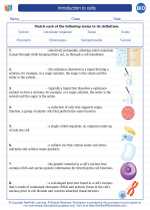Historical Sources
Historical sources are the materials that provide information and evidence about past events, people, and cultures. These sources can come in various forms, such as written documents, artifacts, oral traditions, and visual records. They are essential for historians and researchers to study and understand the past.
Types of Historical Sources
Historical sources can be categorized into primary and secondary sources:
Primary Sources:
- Written Documents: These include letters, diaries, official records, and manuscripts from the time period being studied.
- Artifacts: Physical objects such as tools, pottery, clothing, and artwork that provide direct evidence of past cultures and societies.
- Oral Traditions: Stories, songs, and folklore passed down through generations verbally, providing insights into the beliefs and practices of a culture.
- Visual Records: Paintings, photographs, maps, and other visual representations that offer a glimpse into historical events and daily life.
Secondary Sources:
- Books and Articles: Written by scholars and historians who analyze and interpret primary sources to present historical narratives and analyses.
- Documentaries and Films: Visual media that present historical information and interpretations based on primary sources.
Using Historical Sources
When studying historical sources, it is essential to critically evaluate their reliability, relevance, and context. Here are some key considerations:
Reliability:
- Assess the credibility of the author or creator of the source.
- Consider the biases, perspectives, and intentions behind the creation of the source.
- Compare multiple sources to corroborate information and identify inconsistencies.
Relevance:
- Examine how the source connects to the specific historical event, period, or topic being studied.
- Determine the significance of the source in providing insights or evidence for the research question or historical narrative.
Context:
- Consider the historical, social, and cultural context in which the source was created.
- Understand the intended audience and purpose of the source, which can influence its content and portrayal of events.
Study Guide
To effectively understand and analyze historical sources, consider the following steps:
- Identify the type of historical source (e.g., written document, artifact, oral tradition, visual record).
- Evaluate the reliability of the source by examining the author, creator, and potential biases.
- Assess the relevance of the source to the historical topic or research question.
- Analyze the content of the source in its historical context, considering the time period and cultural influences.
- Compare and contrast multiple sources to gain a comprehensive understanding of the historical events or phenomena.
- Consider the interpretations and analyses provided by historians and scholars in secondary sources.
- Reflect on the significance of the sources in shaping our understanding of the past and its impact on historical narratives.
By engaging with historical sources critically and thoughtfully, researchers can uncover valuable insights and perspectives on the complexities of the past.
.◂Biology Worksheets and Study Guides High School. Introduction to cells
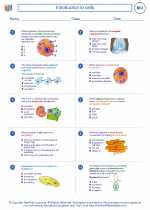
 Worksheet/Answer key
Worksheet/Answer key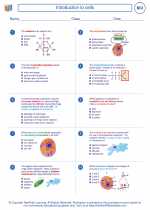
 Worksheet/Answer key
Worksheet/Answer key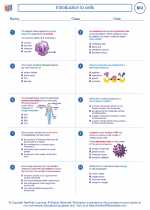
 Vocabulary/Answer key
Vocabulary/Answer key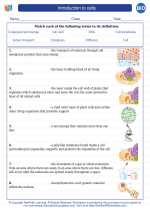
 Vocabulary/Answer key
Vocabulary/Answer key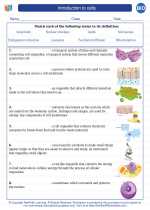
 Vocabulary/Answer key
Vocabulary/Answer key
 Vocabulary/Answer key
Vocabulary/Answer key